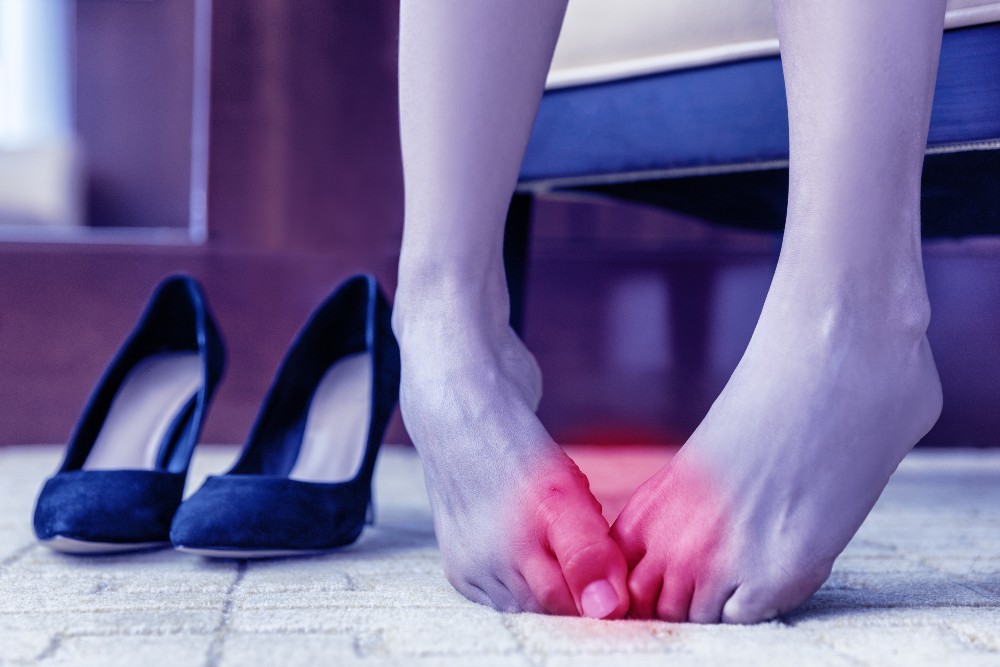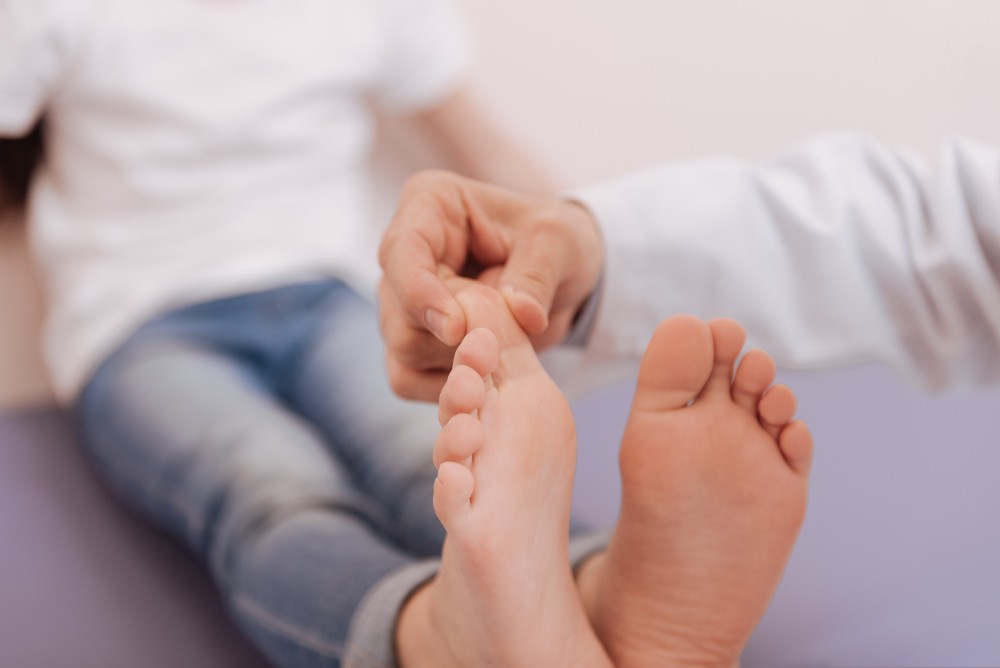Winter is the Season for Foot Care
Reasons Winter is the Best Time for Foot Care
Winter is the ideal time for foot care because it’s easier to conceal them in socks and shoes while you get treated. Therefore, any foot care treatment you receive can be discreet. And you can avoid any feelings of embarrassment about showing them off during treatment.
The sooner your feet are treated now, the sooner you’ll be able to wear sandals and open-toe shoes in the coming warmer months. That way, when spring and summer roll around again with their beach days and BBQs, you won’t need to worry about hiding your toes or feet away in shame – instead, they will be ready to show off with pride.
It may also surprise you that cold weather can lead to foot pain during this season. When temperatures drop, circulation decreases, and blood vessels narrow, leading to throbbing and tingling sensations in your toes and other kinds of foot pain.
Fortunately, our podiatrists can offer foot care advice and methods of treatment to help reduce cold-induced foot pain so that you can enjoy this season despite the chill outside.
Unsightly Problems that Need Foot Care
We all tend to neglect our feet until an issue arises, and we’re suddenly forced to treat the problem – that unsightly corn, stubborn athlete’s foot, fungal toenail, or dry, cracked skin.
When it comes to taking care of such issues, it is often unclear where to begin. Here are some of the most common foot problems, so you can identify whether you should take advantage of professional foot care during the winter season.
Plantar Warts
Plantar warts are a common skin infection caused by the Human Papillomavirus, also known as HPV. These warts look like rough, fleshy growths on the bottom of the feet and can cause pain while walking.
Plantar warts are easily identifiable due to specific characteristics. They have a texture that resembles a small cauliflower or a pattern of tiny black dots, indicating where infected blood vessels have clotted.
In addition, another common sign is an area of redness surrounding it with tenderness and inflammation.
Toenail Fungus
Toenail fungus is an incredibly persistent type of infection that can be tricky to eliminate. It typically appears as a yellowish or brown discoloration and changes the shape, texture, and general health of your nails.
If you notice any build-up of debris under the nail plate, flaking or chipping around the edges of the nail, brittleness in the nail itself, or a strong odor from the infected toe, these are telltale signs that you have toenail fungus.
Ingrown Toenails
An ingrown toenail can be identified by redness, swelling, and pain around the toenail area. It generally occurs when the nail’s sharp edge grows into the surrounding skin, causing irritation and infection. When left untreated, an ingrown toenail can lead to more serious complications.
Bunions
Bunions can be an incredibly uncomfortable problem for many people. They usually appear as a lump around the base of your big toe and can be painful to walk on. It helps to look carefully at your feet – bunions tend to be more pronounced when you’re standing up, and the joint is stretched out.
Treatments for Foot Care Conditions
Discover how we can treat common foot ailments to keep your feet happy and healthy.
Plantar Warts
There is no need to let plantar warts rule your life. Of the treatments available, cryotherapy – or freezing of the wart – is often the first line of defense to remove it. This involves using liquid nitrogen that freezes and kills the virus directly in the wart so it can gradually fall off after several applications.
Another treatment method is an acid application, usually with a topical ointment or gel containing salicylic acid, which causes the wart to fall off after several applications.
Surgical removal may be necessary under local anesthetic for particularly stubborn warts that don’t respond to either cryotherapy or acid application.
With any of these treatment options, your plantar warts can become a thing of the past.
Toenail Fungus
Treating toenail fungus can seem like a long, tedious process, but there are some effective solutions to consider.
Laser therapy is a painless procedure that uses a concentrated light beam to target the infected area with great precision and heat.
Topical cream works by slowly killing off fungi with its antifungal properties, while oral medication can be taken to combat the infection from within.
Although treatments vary depending on severity, the good news is that toenail fungus can be eliminated with an appropriate combination of remedies.
Ingrown Toenails
Your best defense is prevention: trimming your nails properly and wearing shoes that fit you comfortably. If you suspect you have an ingrown toenail, our podiatrists can provide relief and treatment.
We can recommend antibiotics, topical medication or minor surgery with a local anesthetic to remove a portion of the nail altogether. However, ignoring the issue could lead to serious damage and mean a painful tomorrow, so dealing with it today is your best bet.
Bunions
We understand how bunions can be extremely painful and frustrating to live with. Fortunately, a few treatments are available to help alleviate the discomfort associated with this condition.
Custom orthotics are a popular option for many people living with bunions. Orthotics provide arch support and cushioning, as well as correcting abnormal foot motion, which can help reduce bunion pain.
Lapiplasty surgery is another treatment for bunions. It is a 3D procedure which will realign the joint at the base of your big toe. This procedure will also secure the root cause in your joint and alleviate any pain you may experience due to bunions.
No matter which treatment you choose, there is hope that your bunion and the pain can disappear for good.
Let Us Provide You With Excellent Foot Care This Winter!
Don’t wait until warmer months arrive – now is the time to start caring for those tired toes, soles, and heels. You’ll thank yourself later come summer.
To start your winter foot care journey, contact us to schedule an appointment with one of the Waco Foot & Ankle expert podiatrists.


